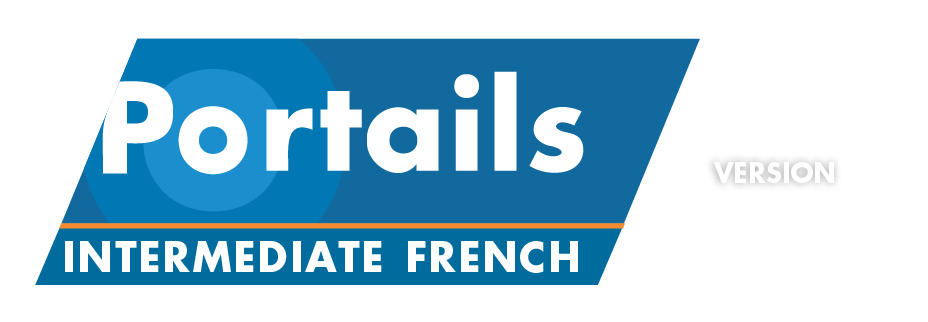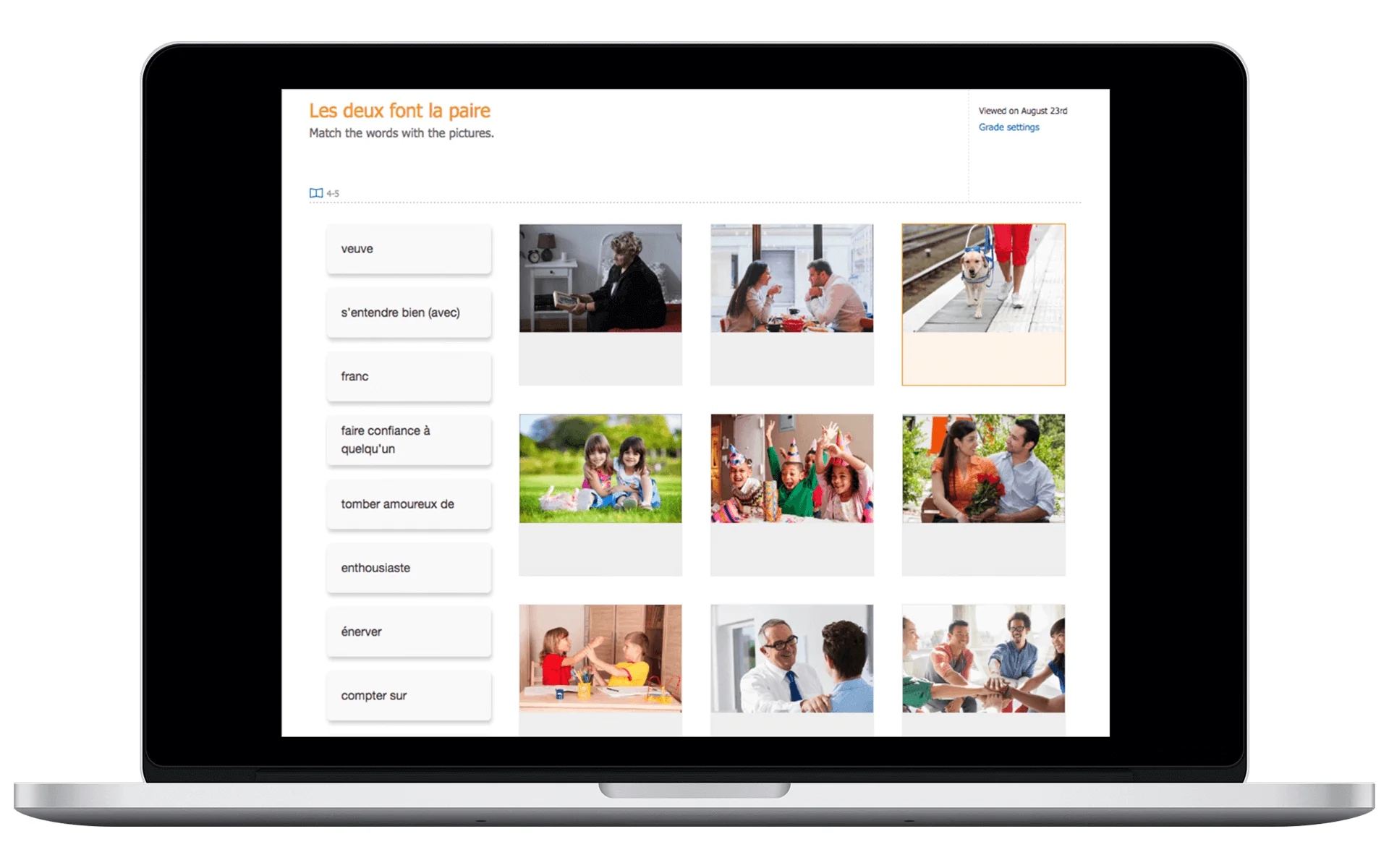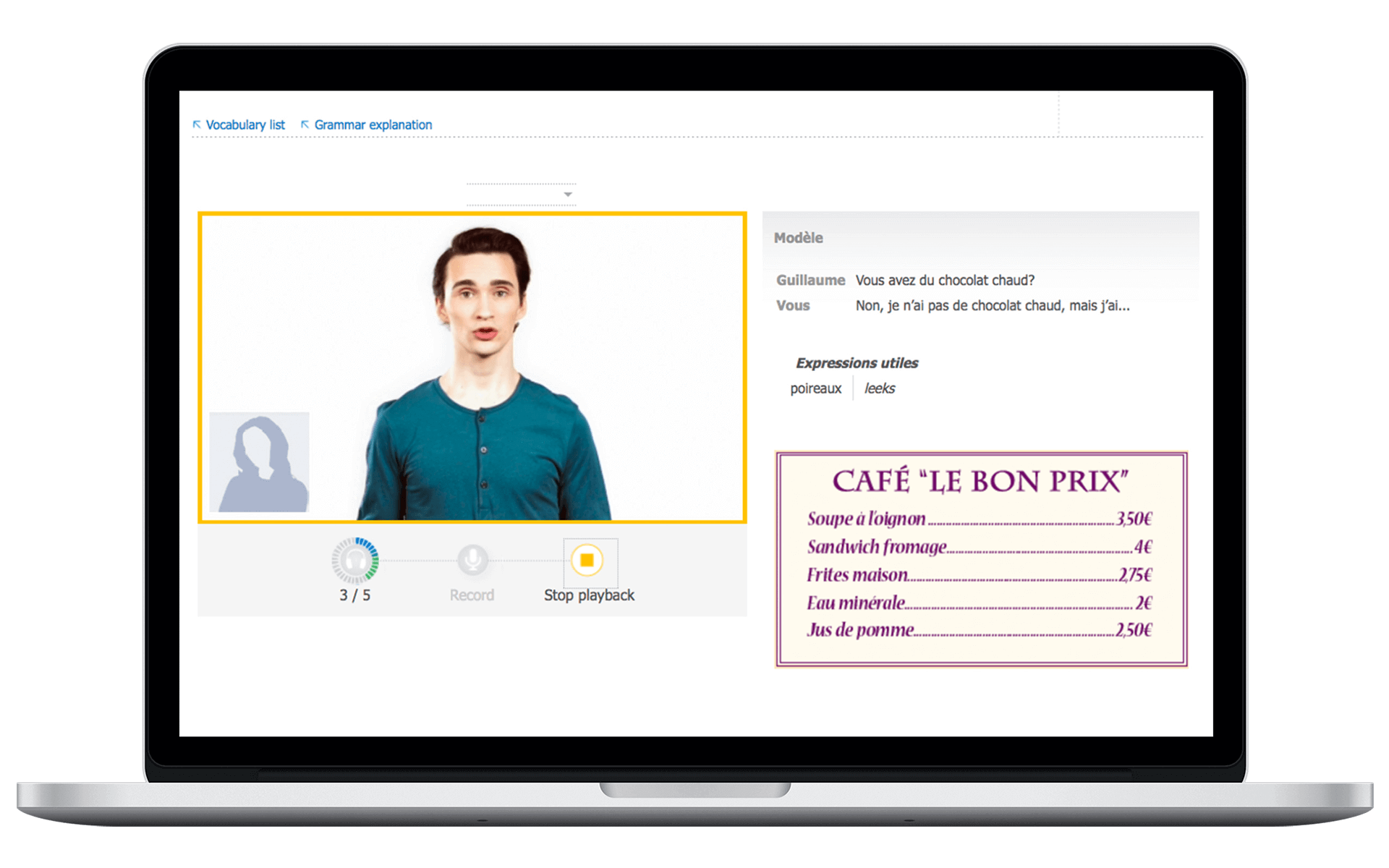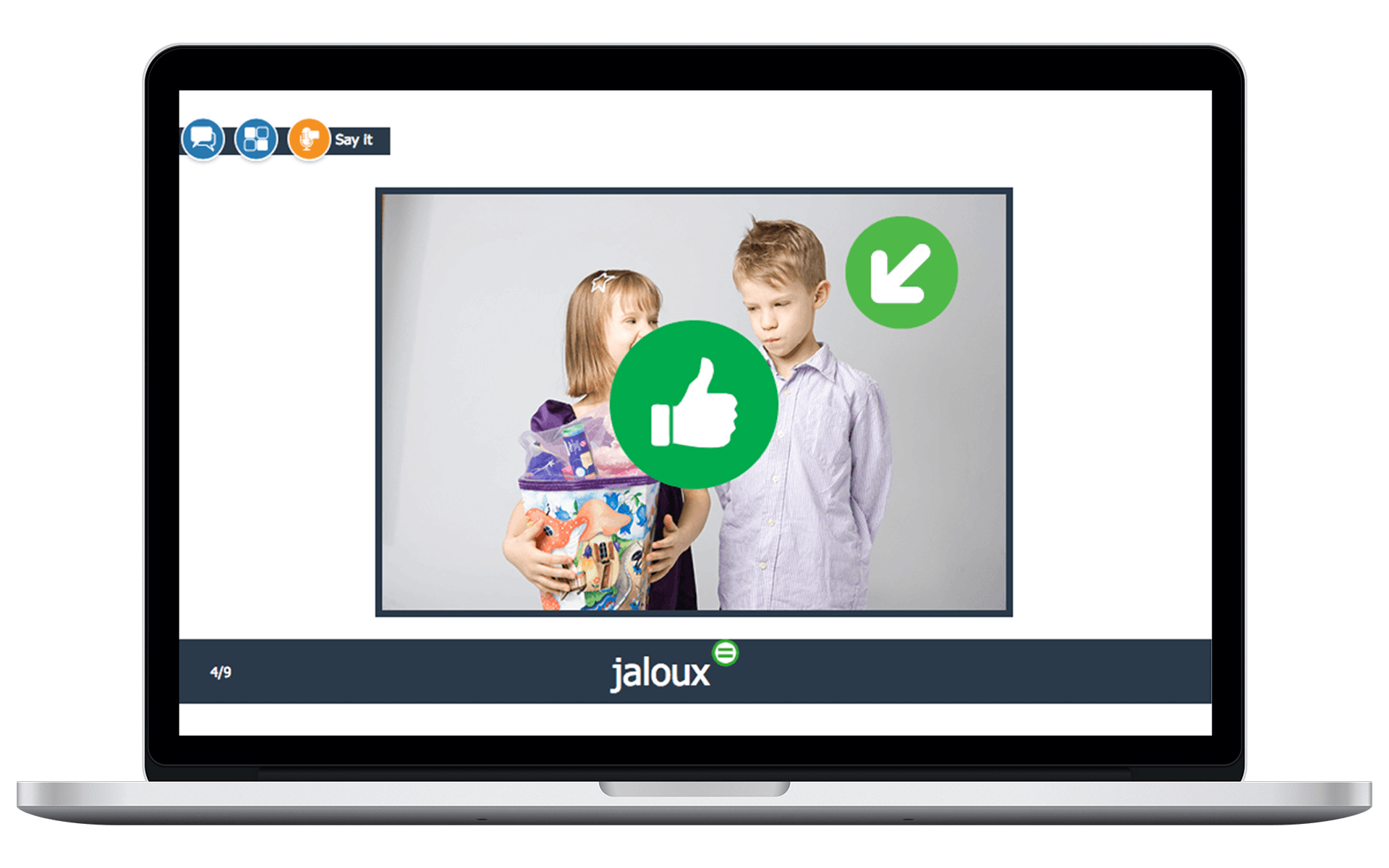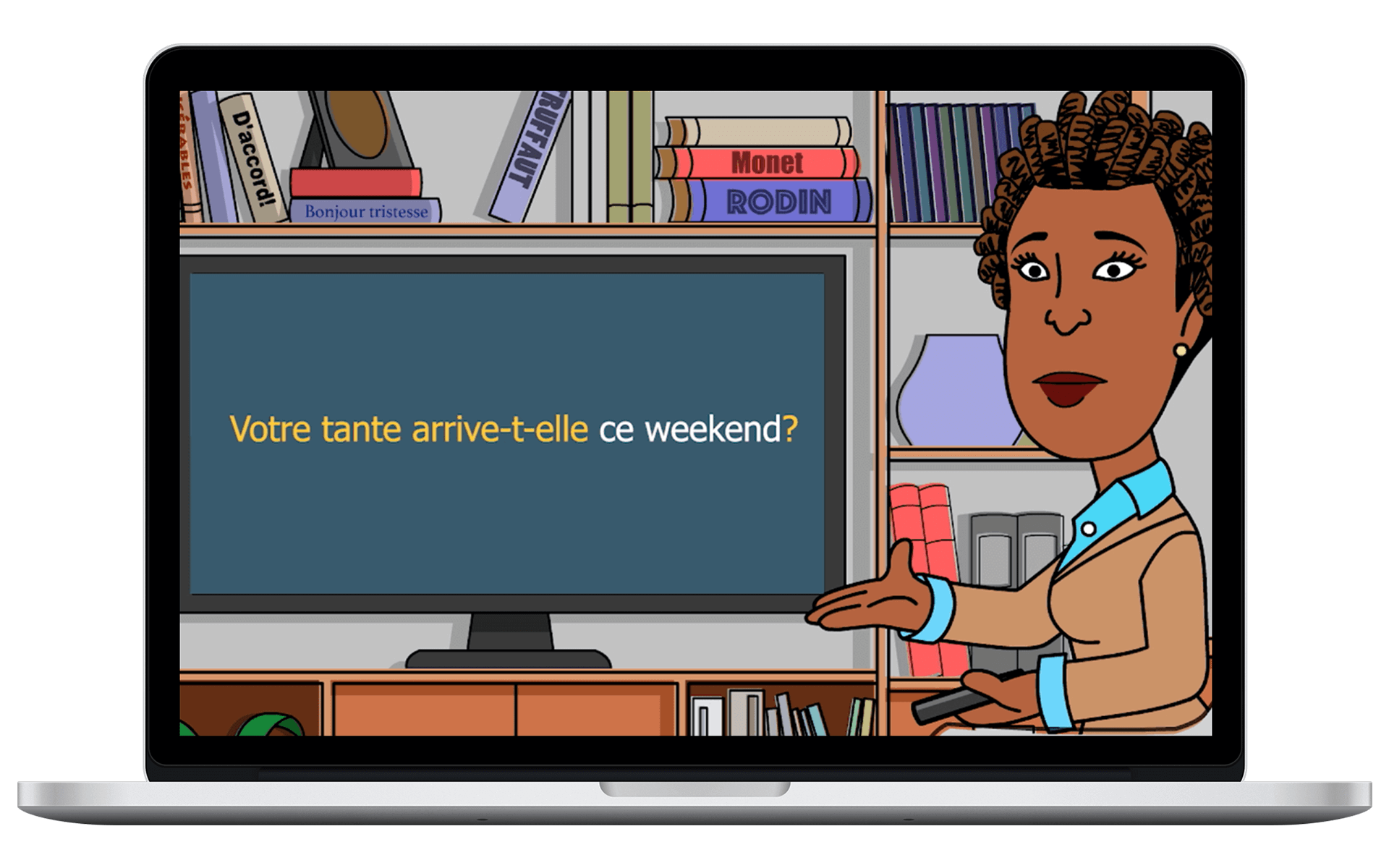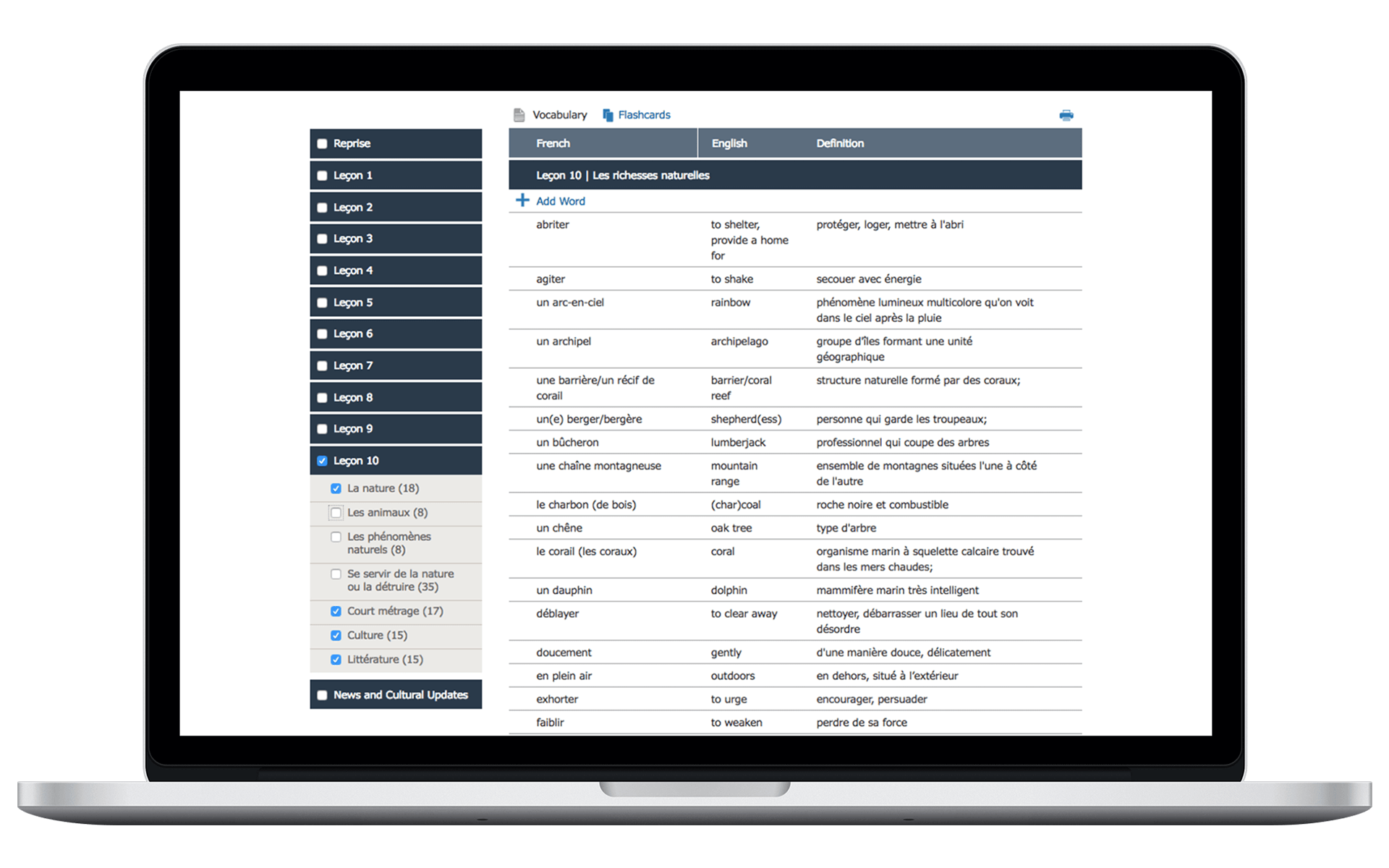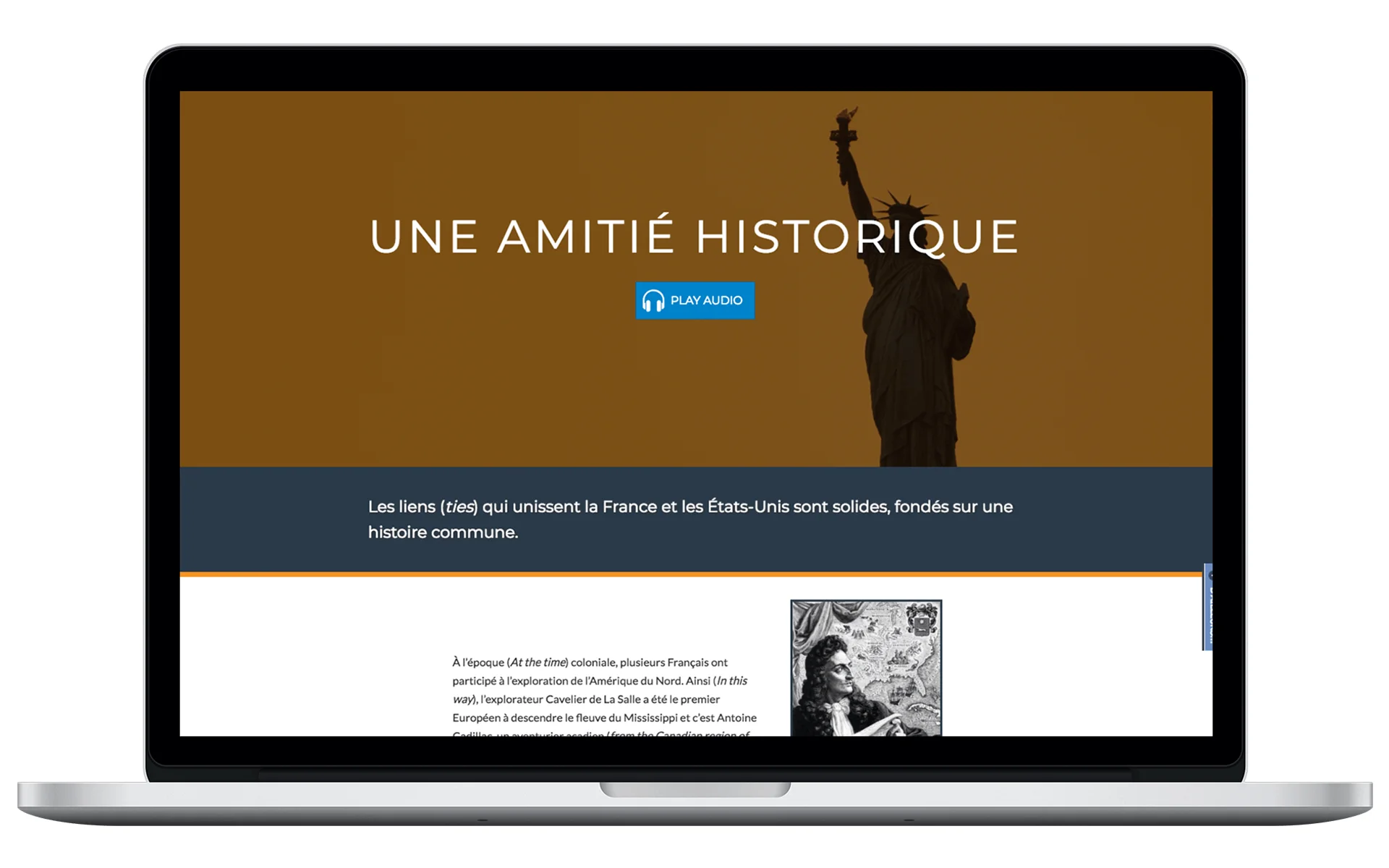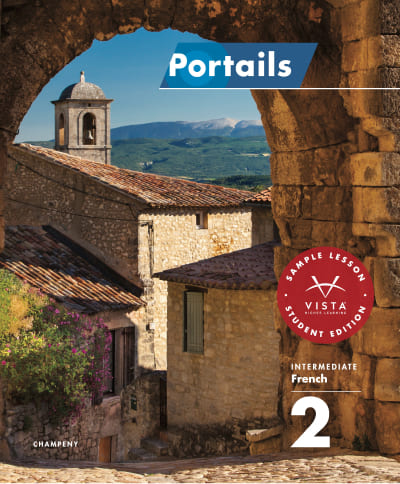1. Context
Provide students with a place to start. Let them share their own experiences with and about the chapter topic.
2. Vocabulary
Give students a new linguistic code to express what they already know and experience in the context of the chapter theme.
3. Media
Give students a new linguistic code to express what they already know and experience in the context of the chapter theme.
4. Culture
Bring students from their own language and culture to that of the target speakers.
5. Structure
The formal presentation of relevant grammar and scaffolded, personalized activities help students leverage grammar as a tool for building confidence, fluency, and accuracy.
6. Skill Synthesis
Pulling all their learning together, students integrate context, personal experience, communication tools, and cultural products, perspectives, and practices.

